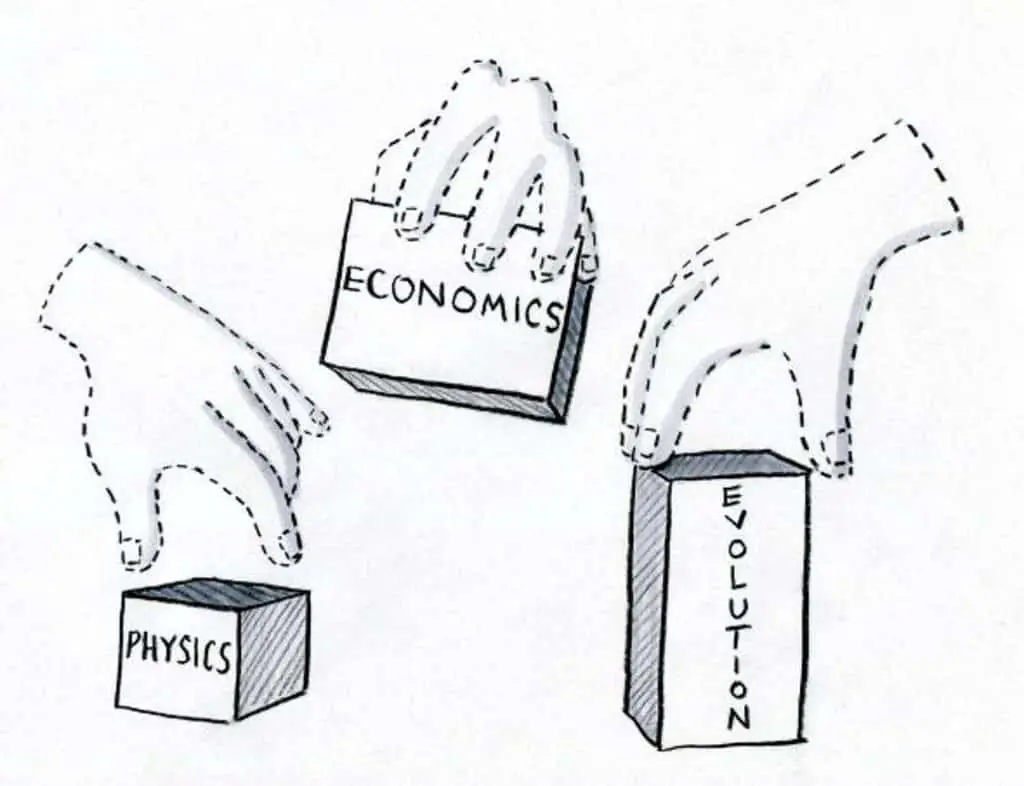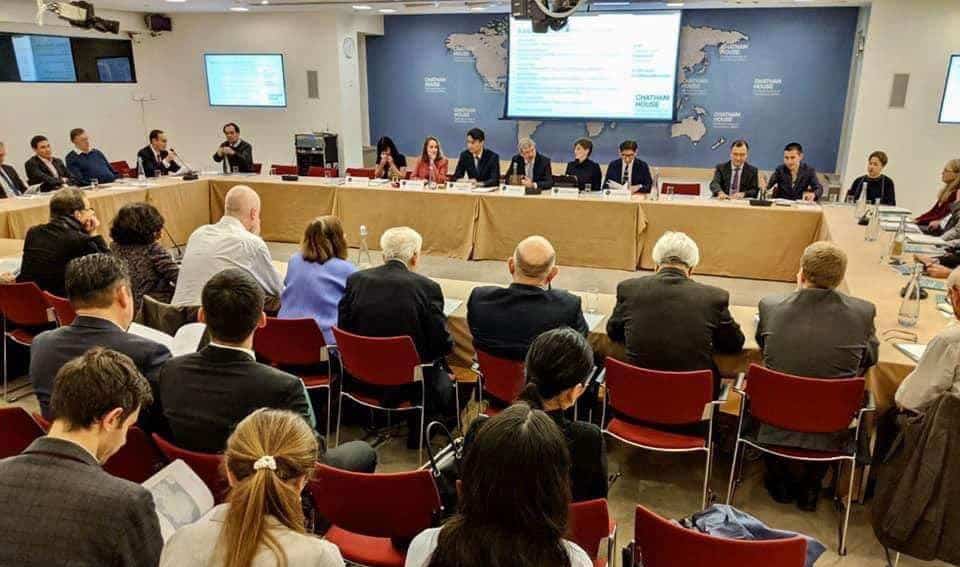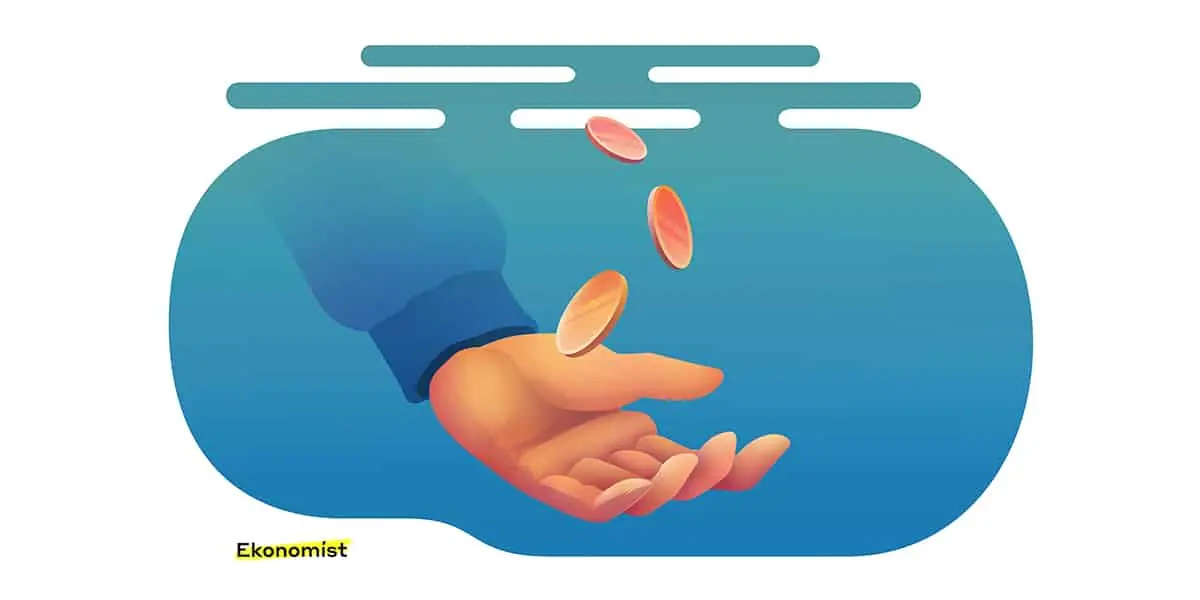Definition of Economics
Economics can be defined as the science of rational human action and behavior aimed at achieving desired economic goals with the least possible expense of the scarce means or resources. But it is often considered as a ‘dismal’ hard subject. It is rightly so, because Economics has become a battlefield for numerous contravening political and economic interests. It is not always possible to satisfy the infinite variety of human needs with their limited financial, natural and physical resources.
Therefore, in order to satisfy them in the most efficient, economical and effective way, people acting in the market must be free to seek for themselves how to achieve higher utility of their goals after deduction of the cost of the economic means or resources that are required to spend in order to attain them.
Unfortunately, this simple truth is ignored by modern Keynesian and monetary economic theories that have become instruments of politics and policies. These main-stream theories are based on the condition that free markets are only semi-efficient mechanisms of exchange, that it is always necessary to intervene in the market economy to insure the effective distribution of wealth and economic resources. However, such intervention to replace Adam Smith’s ‘invisible hand’ of market often ignores the limited nature of economic resources and the need to rationalize them.
We will show how it is possible to incorporate the condition of scarcity of economic resources with the idea of rational human action taken in self-interest in free market to derive maximum utility at a minimum expense.
What are the primary limiting factors the use of which must be rationalized so that human wants are satisfied in a timely way?
These wants or goals are usually referred to as the scope in terms of project management. The limits or constraints, as the means of their achievement, are budgets or money, and time. The scope of work or service is known as the process of delivering necessary economic utility or value, with the expenditure of time as the most valuable and scarce resource that humans have. Time must be utilized to the most possible extent, to derive optimum content in the form of inflow of economic resources per unit of time at their minimum outflow or expenditure. The difference between such inflow and outflow is known as profit or loss. It is, in essence, the net utility or value of any economic activity. It determines the value for money and ultimately the productivity of human physical energy and time.
Adam Smith in his book ‘Wealth of Nations’ referred to these constraints as the ‘Market’. It is the physical or land area within which humans transact to make their living and satisfy all their needs.
The condition of maximum ‘opulence’, according to Adam Smith, is achieved when people produce and trade in self-interest to increase their profit and reduce loss by organizing their labor efforts and time spent on production in such a way as to increase the volume of the desired goods and services created in a given time. Government’s role is the economy must be limited only to enforcement of contracts and protection of property rights and the free market. There’s no need to intervene in market functioning to restore its balance, for example, by providing more money, so that all its products might be bought up. As long as there are products, there will always be sufficient means to purchase them, as stated Jean Baptiste Say, Adam Smith’s follower. There’s no need in additional money: production is the sole source of income and money that can purchase all products. Besides, there are no externalities, no economic resources can be created from nothing, there’s no ‘free lunch’ in economics. Intervention in the market to provide additional money to ‘stimulate’ its growth only re-distributes wealth.
These ideas, as it is well-known, influenced the economic thought for centuries.
Nevertheless, Economics as science can greatly benefit, if these ideas set forth by Adam Smith and Jean Baptiste Say can be explained consistently, by taking into account the physical concept of scarcity of economic resources, free action in the market and its limitations. That way it is possible to introduce into Economics inconsistent and strictly mathematical way all modern mainstream concepts, such as bounded rationality and the game theory.
In order to do that, we have to base Economics on the same fundamental principle of Nature that has many times proven its indisputable soundness in physics, chemistry and biology.
That fundamental principle of Nature is the Principle of Least Action
That principle states that the laws of Nature can be derived in the form of an ergodic invariant that holds valid in relation to all physical actions. This is the Principle of Least Action, that encompasses all economics as a whole comprised of numerous infinite parts. No human mind however vast it is, can take into account all numerous and complex market information and convert it into information necessary for decision making. According to Pierre Laplace, such intelligence needs to control all forces to be able to determine with ultimate precision the future position of any tiny particle that collectively constitute it.
Not surprisingly, it is not possible to know with certainty all such forces. Markets are ruled by the ‘invisible hand’ of Adam Smith or collective subjective ‘free will’ of all individuals acting in the pursuit of happiness and seeking the optimal ways to employ their limited means and resources to achieve their desired goals. Both means and goals are also essentially unpredictable, indeterminate and constantly changing.
However, an efficient economic model does not need to know precisely the market forces. They can remain invisible to the outside observer. The efficient model still can correctly describe the economic mechanisms with an allowable degree of statistical error. Such a model must take into account the universal law applicable without any exception to the whole system and any single parts, that collectively form it.
That law is the Principle of Least Action formulated initially by Pierre Louis Maupertuis and then in a more rigorous and general way by Leonard Euler and Joseph Louis Lagrange. In accordance with this principle, any ‘physical action’ is defined as the mathematical product of ‘Free Energy’ and time. The free energy is found as the difference between kinetic energy of motion of any physical body or particle, and the energy of ‘known’ force exerting on it.
Both energy and time are scarce and limited for humans since they are not the god-like omnipotent and omniscient creatures. Both energy and time cannot be created out of void ‘ex nihil’ by their will. The only difference of Economics and Physics is that the forces influencing human actions are invisible, subjective. However, such forces are ultimately determined by peoples’ desire to achieve goals with least physical effort or labor. Alternatively, rational individuals tend to seek higher output or productivity that satisfy their wants per given unit of time.
How can such Free Energy be introduced into Economics? How is it at all possible to apply laws of soulless matter to rational human behavior?
Even though, the forces that affect human rational behavior and actions are invisible and subjective, it is still possible to define the Free Energy that has the same mathematical form as in Physics, but is expressed in well-known and generally accepted in Economics terms. That energy is the kinetic energy of money circulating in the economy as the universal medium of exchange. That circulation takes place each time when people turn them around as the title to all their goods, services and property.
We can safely state that all economic activity that is monetized is represented by the velocity of money. This velocity is not physical since the money in circulation can physically remain at rest. What represents physical motion and kinetic energy is the movement of people, producing, consuming and exchanging goods and services between each other with the help of commonly accepted recognized medium of exchange, also known as money. The circulation of money represents the exchange of infinite large volume of various goods and services that people create for their own and common well-being.
Such an exchange must also be time bounded and rational as the means of attaining the desired economic goals with the expense of necessary means in the form of individuals’ time and physical energy. In other words, the velocity of circulation of money is an accurate projection of all economic activity that is carried out with the help of the common medium of exchange. That is why money is often referred to as the ‘polar star’ of the economy around which it is rotating.
How is the velocity of money defined in Economics?
As it is well known, velocity of money in Economics is the inverse of time 1/T, where the T is the period over which 1 unit of money turns around in the economy.
Then, the exchange equation is MV = PQ or M/T = PQ or M = PQT, which means that the product of quantity of goods and services Q times price P and multiplied by T over which they are created and exchanged is equal to the amount of money M that pays for their acquisition.
However, this equation is deficient for the following reasons.
- The meaning of the exchange equation leaves vague its underlying economic substance. It states only obvious fact that money created over the period of time T is equal to the price per unit multiplied by their volume Q and time period over which they are produced.
- The velocity of money must be defined for any amount, not just a unit.
- The time period must be by same token of any length, not just some arbitrary period T.
- The velocity of money must integrate the concept of VFM and 3E as the timely rate of value creation, exchange and consumption.
- The exchange equation must reflect timely dynamic market equilibrium between money, its velocity on one hand, and the volume of goods and services and their price on the other.
- All macroeconomic variables in the exchange equation must be comprised of the microeconomic variables with the same aforementioned requirements to their volume, time and value.
All these requirements prerequisite for the use of the fundamental Principle of Least Action can be satisfied if we define the velocity of money and price in the same way as in physics that can take the dynamic and variable form of mathematical differentials of money M and products Q in time:
V = dM/dt, money velocity,
P = dQ/dt, price or value.
Here in capital letters, we denote macroeconomic parameters. Microeconomic money velocity and price can also be defined as same time differentials:
v = dm/dt and p = dq/dt.
Here mathematical differentials denote not necessarily infinitesimal quantities of money and products and time, but rather those taken at a given moment in time. These quantities dq, dm and time dt intervals can be regarded as infinitely small in relation to greater amounts of q, p and t.
The differential formula for p = dq/dt actually means that price is defined as result of market exchange at a particular moment:
p = lim [q(t+dt) — q(t)]/dt, where limit is taken with dt →0. It can be considered as small as it is practical in the market.
This differential formula reflects the marginal character of price as the difference between the ‘bid and ask’ quantities, and is equal to the difference of the inflow and outflow of economic resources.
Same is true with respect to the definition of v = dm/dt with the exception that the flow of economic resources or benefits in the exchange of products q is expressed in monetary terms.
We must also note, that M = Σm, Q = Σq.
Therefore, we can define macroeconomic parameters as weighted averages of microeconomic variables:
PQ = Σpq, P = Σpq/Σq.
MV = Σmv, V = Σmv/Σm.
Macroeconomic velocity of money V can be interpreted as velocity of the center of gravity or individual money masses m comprising M.
If we substitute thus defined microeconomic variables into the exchange equation, we will get as follows:
MV = Σmv = Σmdm/dt = Σmdm = 1/2Σdm2/dt,
PQ = Σpq = Σqdq/dt = 1/2Σdq2/dt.
Since MV = PQ, then 1/2Σdm2/dt = 1/2Σdq2/dt and Σd(q2 — m2)/dt = d[Σd(q — m)(q + m)]/dt = 0.
Therefore, q – m = 0. Each microeconomic variable q has its monetary equivalent m, q = m.
Same applies to macroeconomic variables: Q = M.
As we can see, the application of above differential formulas for products price and velocity of money to the exchange equation gave as straightforward result formulated by Adam Smith. They prove that each product is equivalent in itself to the form of payment that can be considered as equivalent of money.
Money, market information and VFM
We can define as money the commodity which can be used as the common denominator or unit of measure allowing comparison of prices. This unit of account must be most stable in terms of its production to the existing stock and constant in relation to all other goods and services produced in the economy. Such common unit of account allows calculation of ordinary or marginal quantities in cardinal or monetary terms.
Money is not only form of payment but a unit of account which allows expression and comparison of all product prices and their utilities. In addition to physical data on volumes, money convey price information of their utility in the generally accepted monetary form.
Such monetary information is lingua franca of Economics. Money allow to calculate incomes and costs and allocate scarce economic capital and human resources in time and space in a timely fashion. If money is stable it allows to save and optimize production and consumption of economic, natural and human labor taking into account all-encompassing information about their availability, productivity and demand so that it would allow exchanging value for money (VFM) in economical, efficient and effective way (3E).
This article was published in Seeking Alpha
Sayan Kombarov, author of Energy of Human Action: Physical aspects of Economics for free Market, Sound Money, Peace and Prosperity


















